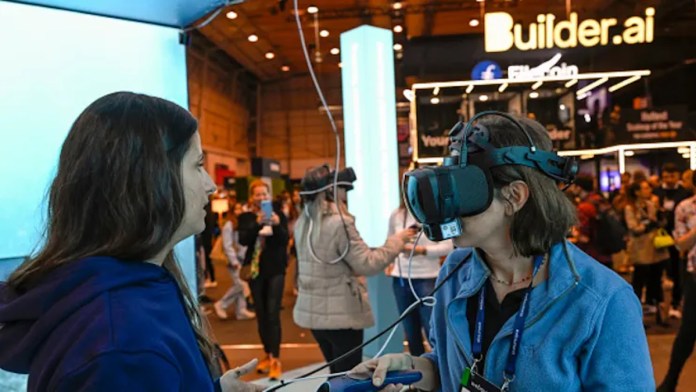Technologies like artificial intelligence and virtual reality will play a significant role in resolving complex human resource problems, including employee disengagement and decreased productivity.
Employee training is one area where this is likely to be seen most prominently. According to Tacy Byham, CEO of the worldwide human resources and leadership development consulting firm DDI, the user-friendliness and immersive nature of AI and VR are elevating staff training to a whole new level.
Obviously, the use of virtual reality simulations in staff training is not new. For years, companies in sectors ranging from automotive to healthcare have used VR to train manufacturing floor employees and emergency room personnel.
VR training may be used efficiently for soft-skills training because of advances in AI, which “creates a chance for staff to practise discussions,” according to Byham. “It also offers an immersive environment that feels secure, allows for practise, and serves as a springboard to incredibly profound and pertinent dialogues.”
Before the epidemic, Byham had worked with VR training sessions for years. She said that all businesses may profit in many ways from AI and VR technology and that employers should begin using these technologies.
Increasing engagement, learning, and retention
Lower employee engagement and the rush to retain staff, despite enormous layoffs in the IT sector, are two of the main concerns plaguing HR professionals.
Frankie Cavanagh, who is in charge of technology at Gemba, a virtual reality learning platform for the workforce, wants to find the best ways to get people to learn. He said that virtual reality is the ideal instrument to change corporate training and boost employee engagement.
“You’ve probably seen the memes about workplace training where employees click, click, click things, getting through online trainings as fast as possible,” Cavanagh said. “These training are not fun, they’re not engaging, and you instantaneously forget about things. VR is different, because it immerses employees into an experience.”
Cavanagh continued, “It’s a technique to help engage people, and once you’ve engaged a learner, you can very much teach them anything, so VR is the ultimate tool for that.”
VR learning and training has a bigger impact on employees than traditional ways of learning.Cavanagh said that conventional technologies such as PowerPoint presentations, online courses, and how-to videos do not filter out the outer world like VR does.
The employee is immersed in a simulation of the content of their training sessions. Exposure to and immersion in the subject matter aid employees’ retention of information more than traditional techniques.
Cavanagh said, “VR has durability in terms of keeping this knowledge.” It wasn’t simply the day when you sat at your computer, clicked through, and saw the horrible online video training.
Providing safe space for tough conversations
Whether you’re a manager who has to provide a performance assessment or an employee expecting to discuss a raise or promotion with your boss, every employee in a firm must eventually engage in difficult workplace talks.
Byham said that VR and AI may assist employees in going through these scenarios and practising what they’re going to say, resolving stumbling blocks, blockages, and errors prior to interacting with coworkers in the real world.
Workers may also anticipate the kind of answers they could get. In these VR environments, virtual persons might have a favourable, negative, or neutral reaction to what an employee would say, preparing them to respond more effectively to comparable emotions shown in real workplace conversations.
“Let’s assume you’re in a situation where you need to speak with an employee about missed deadlines,” Byham added. “The VR staffer answers with ‘What do you mean?’ “Hey, you have given me six distinct tasks. How could you possibly expect me to do everything at once?'”
In this simulated scenario, the manager has time to consider how to react when this or a similar situation occurs in real life, she noted.
Byham said that it is the utmost obligation of a leader to help reduce the level of emotion in the room. They are expected to listen, establish rapport, and make workers feel heard. These VR simulations enable executives to have more in-depth dialogues about performance.
Byham said, “You may have folks watch a video, listen to a podcast, or get wonderful advice about how to have a performance chat, but you won’t be able to modify or improve your conduct unless you’ve experienced it yourself.”
Incorporating advanced technology
Although Byham and Cavanagh agree that VR and AI technologies have the potential to assist workers at all levels of an organisation, using these tools is not a one-step fix-all solution. The inclusion of these tools is the first stage in the adoption of VR technology.
Byham also wants businesses to think about how well these VR technologies would work in their own workplaces.She said that finance, equipment, and IT support may prevent a business from using VR solutions.
Do you keep this equipment at the office and expect users to come there, or do you let them use it from afar? Do you require more IT support to enable virtual reality? What is your VR investment budget? Do you have the correct type of facilitators to assist with programme administration and debriefing?
“To what degree do managers assist individuals in their journeys?” Byham said that HR cannot be the only ones responsible. “You must ensure that your supervisors are there to listen, provide assistance, and provide coaching. It is one of the most essential levers for ensuring that individuals will utilise virtual reality and really effect behaviour change.”

